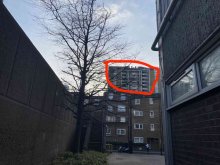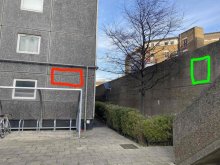salmirabile
New Member
- Joined
- Jan 10, 2021
- Messages
- 10
Hey guys,
So i have a simple setup of 1x 100w panel with a max amp rating of 8a, mated to a 20a MPPT control which is then connected to a 12v battery. I only need to draw around 1.5a from the battery so usage is quite minimal. this is to run a small alarm system for my garage.
My current cable run is 5m from the panel to the controller and less than 1m from the controller to the battery. all using 6mm2 cable.
My problem at the moment is I hardly get any sun in the day due to the panel placement. (i live in a block of flats in London so not many options here!)
My question is the cable sizing for a certain run. the new placement will place the panels around 15m away from the controller. and from what I've gathered from various online calculators, I'll need at least 25mm2 cable for that run...HUGE! is that accurate?
If so, can I run the 25mm2 cable as close as possible to each end of the circuit (from panel to controller) but then terminate the cable with 6mm2 cable to both the controller and solar panel? the reason being the controller won't take 25mm2 cable and neither can you get MC4 connectors that can take 25mm2 cable.
thanks for any help.
Sal
So i have a simple setup of 1x 100w panel with a max amp rating of 8a, mated to a 20a MPPT control which is then connected to a 12v battery. I only need to draw around 1.5a from the battery so usage is quite minimal. this is to run a small alarm system for my garage.
My current cable run is 5m from the panel to the controller and less than 1m from the controller to the battery. all using 6mm2 cable.
My problem at the moment is I hardly get any sun in the day due to the panel placement. (i live in a block of flats in London so not many options here!)
My question is the cable sizing for a certain run. the new placement will place the panels around 15m away from the controller. and from what I've gathered from various online calculators, I'll need at least 25mm2 cable for that run...HUGE! is that accurate?
If so, can I run the 25mm2 cable as close as possible to each end of the circuit (from panel to controller) but then terminate the cable with 6mm2 cable to both the controller and solar panel? the reason being the controller won't take 25mm2 cable and neither can you get MC4 connectors that can take 25mm2 cable.
thanks for any help.
Sal






